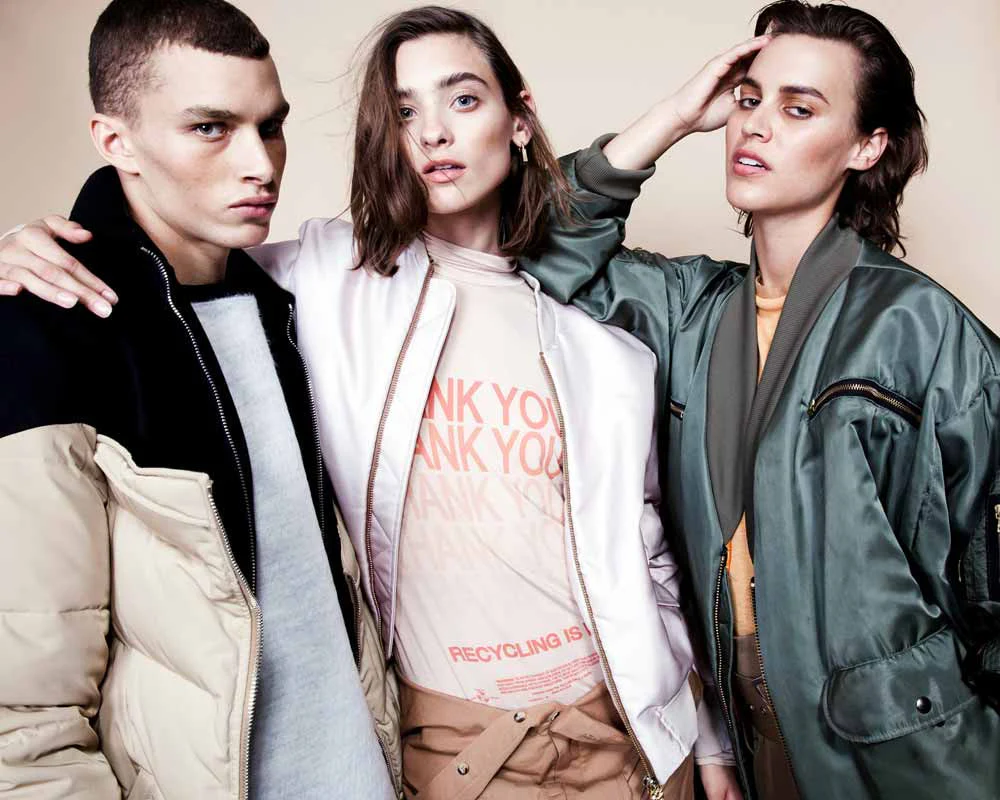The rise of gender-bending fashion is nothing new. But thanks to the unprecedented loosening of societal norms during the Covid pandemic, it’s now more glamorised by celebrities than ever before.
We keep hearing about retailers that are thinking in new ways about how to order clothes – from high-end designers such as Stella McCartney or PacSun, the apparel brand for teenagers. What’s going on?
Self-Expression
So as fashion sees the erosion of gender dichotomies, designers are launching collections that blur the boundaries between menswear and womenswear: oversized silhouettes, shapeless styles and non-gender-specific patterns such as ginghams and Prince of Wales checks have made it on to the catwalks of high fashion, just as they do in street-style photos.
High-street retailers such as ASOS and Zara include gender-neutral sections within their ranges: baggy T-shirts hang alongside loose hoodies in muted tones of grey and olive.gender-fluid celebrities such as Harry Styles and Janelle Monae, wearing a tuxedo jacket with a long gown on a red carpet, symbolise the movement.
Androgynous models are fronting ever more fashion campaigns, while beauty brands and makers of unisex jewellery have launched products to appeal to all gender identities. This all-inclusive, cosmopolitan, colourful and creative celebration of individuality healthily revels in dressing and identifying as whatever you care to be, while doing as much good for the planet as it does for your psyche – fewer clothes go to landfill and manufacturing carbon footprints are reduced; the future is looking very good for this movement in the making!
Empowerment
Allowing men and women to indulge in gender-neutral fashion means there are more opportunities for us to be authentic. Gender-neutral fashion not only challenges the notions of traditional gender but also by being inclusive; in addition, it also empowers the youth as it liberates them from social constraints which eases them into themselves.
Gender-neutral clothing is made from soft yet stretchy materials that allow for freedom of movement and airflow, and from easily washable, loose-fitting silhouettes accentuating human forms over body parts, or that are not fitted more tightly around gendered features. Pleats, pyjama tops, unisex trousers are popular expressions of this emerging style, adopted by many non-binary and genderqueer individuals.
Some of the largest fashion retailers in the world now stock cross-gender lines, including ASOS’ ungendered section, which features big unfitted t-shirts and baggy hoodies, as well as PacSun’s collaboration with The Trevor Project that offers gender-neutral apparel for kids and adults in colours and cuts.
Inclusion
Increasingly fashion designers have used gender-neutral clothing as an impositive force as both inclusion and liberation. It also has an apothesising pwoer to transform our very sense of self by liberating our ability to express ourselves more fully as unique human being while also braking down binary absolutism and forcing us to open our minds towards more sage-oriented perspectives.
Because gender-neutral brands not only break the classic men’s and women’swear segments and prioritise inclusiveness over stereotyping by offering sizes for everyone but also provide us with the opportunity to don more stylish outfits than ever before. So, brace yourselves, because this year more and more brands will likely adopt gender-neutral measurements to serve all of our needs.
Wederski is now designing a gender-neutral accessories line to be sold on his site, which will feature pieces ranging from blazers to scarves to hats. As designers begin to erode gender barriers, expect more genderless accessories that complement all outfits seamlessly.
Diversity
Fashion that is neutral across gender is more than just a trend; it is part of a wider move to celebrate inclusivity and diversity. Inevitably, it affects other aspects of the fashion industry, from beauty to accessories. Many of Generation Y and Generation Z do not see themselves as belonging to just one group of binary genders, and they don’t want to buy from brands that don’t also reflect this. Celebrities like Janelle Monae and Billy Porter show that it is possible to transcend the masculine and feminine by blurring the edges and affirming both sides of the binary simultaneously. Other innovators within the industry are using the collections that they design, or the styling that they do, to fight against gender norms – notably the Serbian fashion designer Nikola Markovic (they/them pronouns).
Even then though, the fact that most brands hyper-masculinise their gender neutral clothing means they’re not embracing fluidity so much as creating hyper-masculine clothing that just happens to be available for women too.
The analogy seems to be a marmalade sandwich, which allows a wider audience of people to understand and appreciate the experience. Inclusive-minded fashion retailers can benefit from a wider audience of potential consumers. Like fruit in a cake, inclusive fashion designs can open up new creative avenues. Retailers can forge deeper relationships with their customers. Inclusion can support rather than hinder innovation. It can also serve to inform new concepts, products and ways of working. Furthermore, the philosophy of inclusion could engender a sense of collaboration and collegiality in the fashion industry. This, in turn, could lead to market expansion and a more sustainable fashion industry through higher sales. While fashion retailers need to be careful not to be tokenistic in their endeavours for inclusivity, it is the greenest of fashion retail trends.


